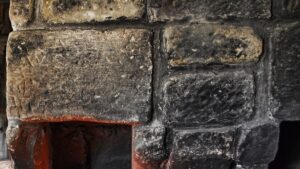 After a fire, hazardous chemicals can linger in the air of damaged buildings at levels exceeding regulated exposure limits, posing serious health risks to workers and tenants. Effective air quality evaluation is essential to ensure safety during restoration efforts and to comply with health and safety standards.
After a fire, hazardous chemicals can linger in the air of damaged buildings at levels exceeding regulated exposure limits, posing serious health risks to workers and tenants. Effective air quality evaluation is essential to ensure safety during restoration efforts and to comply with health and safety standards.
Purpose of Fire Investigation Air Sampling Services
The primary goal of air sampling in fire-damaged buildings is to identify and quantify airborne contaminants that may pose health risks. These contaminants, often released during combustion or structural damage, include toxic gases, particulate matter, and fibres. Precise identification allows industrial hygienists and safety professionals to develop remediation strategies and ensure safe re-occupancy for tenants and workers.
Key Airborne Contaminants Evaluated During Fire Investigations
Fires release a broad spectrum of hazardous substances. Our laboratory specializes in analysing these contaminants to support safety assessments:
- Volatile Organic Compounds (VOCs): These compounds originate from solvent spills, burned wood, and plastics. Analysis helps identify individual and total VOCs to assess compliance with exposure limits.
- Polycyclic Aromatic Hydrocarbons (PAHs): Found in creosote and tar, these carcinogens are evaluated for both their volatile and particulate fractions.
- Formaldehyde: Released from heat-damaged wood, engineered wood, and adhesives, formaldehyde is assessed due to its carcinogenic and irritant properties.
- Semi-Volatile Organic Compounds (SVOCs): Common SVOCs like phenols are indicative of smoke contamination and are identified during testing.
- Soot (Elemental Carbon): Our laboratory uses the NIOSH 5040 method to measure soot levels, a critical indicator of combustion byproducts.
- Fibres (Asbestos and Glass): Structural fires can release hazardous fibres. We evaluate these materials to assess their risks to respiratory health.
- Crystalline Silica Dust: Pulverized concrete and rock generate respirable silica dust, a known cause of silicosis. Testing determines its concentration.
- Inhalable and Respirable Dust: General dust, including particulate matter not otherwise classified, is evaluated for safe exposure levels.
- Lead Dust: Fires in older buildings often release lead from paint residues, posing severe health risks, particularly to neurological systems.
- Metal Dust: Metals from paint ash, rust, and other materials are analysed to evaluate exposure risks.
Why Choose a Canadian Testing Laboratory?
LCS Laboratory Inc., based in Canada, is uniquely positioned to support the Canadian health and safety community. By choosing a local laboratory, clients benefit from faster turnaround times, Canadian-specific regulatory expertise, and direct access to technical support. Our services are tailored to the needs of industrial hygienists, consultants, and safety professionals, helping them maintain the highest standards of workplace and tenant safety.
Contact LCS Laboratory Inc. Today
Ensure your fire investigation assessments meet the highest standards of precision and reliability. LCS Laboratory Inc. offers advanced air sampling and testing services, equipment rentals, and technical support to address your fire-related health and safety concerns. Contact us to discuss your project or learn more about our services.











